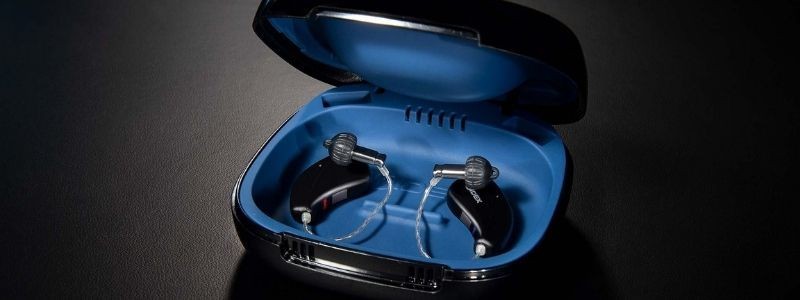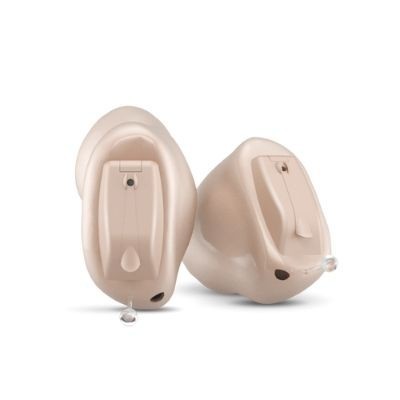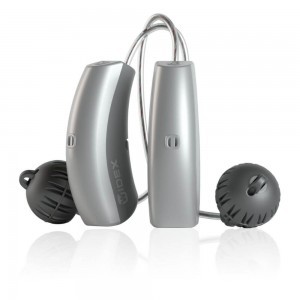Widex Moment
- BTE and ITE models available.
- Rechargeable options.
- Compatible with all Widex accessories.

Widex Moment Hearing Aids
Reviews, Styles, Features & Benefits
Finally, lithium-ion rechargeables!
March 2020 saw the launch of the Widex Moment hearing aid with the smallest lithium-ion powered rechargeable addition in the industry. This has been well received as, so far, Widex’s real flaw has been the absence of lithium-ion-powered rechargeables in their model list.
With today’s digital hearing aid technology, this has been considered Widex’s stumbling block – as consumer demands have changed and are finding this option an attractive concept.
Quick links to Widex Moment hearing aids information:
►Click here to go to features & benefits
►Click here to go to the models
►Click here to go to our review
Widex Moment hearing aids include a developed AI System
However, Widex Moment hearing aids provide convenience with a simple compact charger and the confidence to know that you have all the power you need. Including an AI system that trains your hearing aids and makes them more personable, so you gain from a much better hearing experience. This hearing aid collection develops upon the AI SoundSense Technology found in the Widex Evoke range - Moments predecessor.

Widex Moment hearing aids information breakddown
- The main features and why they could help your hearing.
- Widex Moment accessories and compatibility.
- Widex Moment videos (including range overview and unboxing video).
- Widex Moment models and comparing models.
- Widex Moment technology levels.
- How to pair your Widex hearing aids to your smartphone.
- Widex Moment reviews.
- Brochure download.

Widex Moment hearing aids can eradicate the artificial
The Widex Moment hearing aid range is designed to change the way in which hearing aids themselves sound. What has always been a challenge for manufacturers is getting the sound right without the hearing aid sounding like a hearing aid. The tinny and artificial sound you hear has, until now, been the norm.
So, why do they not sound like hearing aids? Generally, the sound you hear is out of sync in past hearing aids. Due to the processed sound reaching the eardrum a split second later than the sound that travels directly through or around the hearing aids ear-tip. However, in reality, the ‘tinny’ sound Widex is referring to is a generalisation.
In truth, it’s rare that people can detect digital echo in aids and most who have worn Moment aids can’t detect the difference in speed from their past devices. But, they have enjoyed the natural sound quality - so they must be doing something right! For instance, Widex surveyed and found that around 95% said the sound was ‘natural’ and ‘clear’.
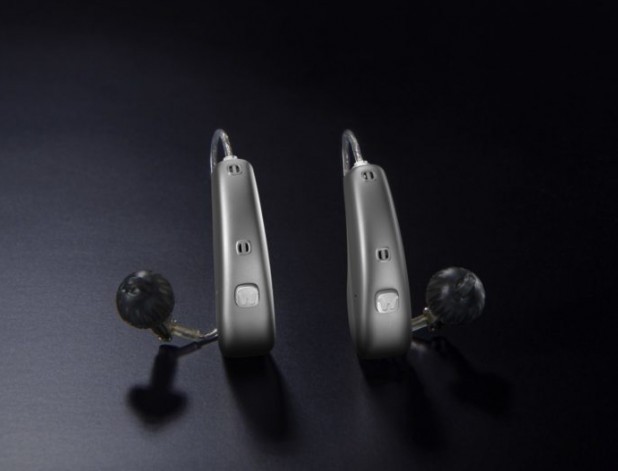
Widex Moment hearing aids offer better personalisation
Widex Moment hearing aids are compatible with the SoundSense Learn smartphone app. This app supports AI and machine learning to personalise your own unique hearing experience. Why is this beneficial? This platform creates hearing programs developed on your typical soundscape. The typical environment sounds of your commute, office space and favourite restaurant will be enriched automatically - natural sound everyday.
The data used by this app is taken from how often the wearer manipulates the volume and how many bespoke settings they create in their commonplace environments. Your real-life preferences can then be used to improve your soundscape and the service from your hearing care professional.
Widex Moment Hearing Aid Features
The rechargeable Moment hearing aids
Nifty rechargeable style
At the time of launch, Widex Moment hearing aids offer the smallest lithium-ion rechargeable on the market. So now you can have the convenience of power and rechargeability with a discreet hearing solution. Plus, they’ll never have to struggle with hearing aid batteries again!
All the charging systems Widex has on offer for the Moment hearing aid range are all wireless power transfer charging, small, lightweight and have been thoughtfully designed. There is also an option to upgrade to their 3 in 1 charging system - the Charge n Clean. See both options below.
Standard Widex Moment hearing aid charger offers:
- 4-hour charge for full days use (depending on streaming usage)
- 30 minutes charge for 4 hours use (depending on streaming usage)
- Compact
- LED lights to show that they are charging and status
3 in 1 Charge n Go Widex Moment hearing aid charger (see visual below) offers:
- Compact
- 4-hour charge for full days use (depending on streaming usage)
- 30 minutes charge for 4 hours use (depending on streaming usage)
- UV-C LED treatment to eradicate bacteria
- Temperature stabilisation to maintain hearing aid performance
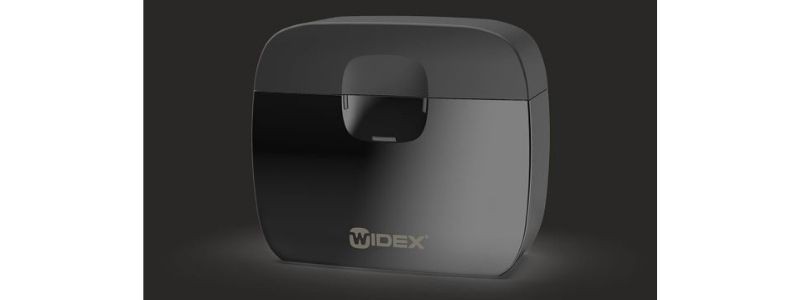
Widex Moment hearing aid Bluetooth and connectivity
The Widex Moment hearing aid range provides you with fast and reliable Bluetooth connectivity. All Widex Moment technical specifications include Bluetooth streaming, Remote Care, real-life insights and app features.
In fact, Widex has upgraded its 2.4 GHz Bluetooth connectivity in its Widex Moment hearing aids. Now you can stream from iPhones, Android smartphones and Widex TV Play (and other DEX accessories).
Widex Moment hearing aids stream audio directly from iPhone (and other iOS devices) without any additional accessories. However, if you don't have a 2.4GHz solution you will need to invest in their DEX accessories to make connectivity possible.
Widex Moment hearing aid phone compatibility
Widex Moment hearing aid Android compatibility:
Runs on Android OS version: 7.0, 8.0, 8.1, 9.0, 10.0.
Widex Moment hearing aid iPhone compatibility:
Runs on iOS: 13.2 - 14 latest, OS: 13.3 and Apple Watch: OS 6.1.
Widex Moment hearing aid app - Compatible Moment app requirements
- iOS: iPhone SE (2020) or later.
- iPad: Air 3 or later.
- Apple Watch: Series 1, 2, 3, 4 and 5.
- Android: Moto Z Play, OnePlus 6T, Huawei P30 Pro (2019) or later, Google Pixel 2 XL or later and Samsung Galaxy A51 or later.
Widex Moment hearing aids are water-resistant
Widex Moment RIC hearing aid models are nano-coated, which means that the risk of getting moisture into your hearing aids is greatly reduced. There's also no battery door in these models, so fewer gaps to allow moisture to get within the device.
Widex Moment hearing aids for tinnitus
It's no secret that Widex has been historically very good at supporting those with tinnitus - arguably they are in fact a leader in tinnitus management. Their ZEN Therapy is a comprehensive program that tackles amplification, counselling, sound stimulation and stress reduction to support symptoms.
Widex Moment hearing aid accessories
The hearing aid accessories that Widex have available that are compatible with Widex Moment hearing aids are:
- COM-DEX: A modern hands-free communication accessory, which can also be connected to two phones.
- RC-DEX: A portable and discreet hearing aid remote control.
- TV-DEX: An easy-to-use wireless supportive listening device - ideal for enjoying your TV programmes and other audio.

Widex Moment Hearing Aids
What Widex Moment hearing aid models are on the market?
So, what's available in the Moment range?
There are now ten hearing aid types on offer, these are - three BTE styles, four RIC styles and three ITE styles available in the Widex Moment hearing aid range. Let's take a look at each model and its key features below:
Widex Moment hearing aid colours
ITE Models: The colours available in the Widex Moment ITE models are: Clay brown, dark brown and light beige.
BTE Models: The colours available in the BTE and RIC models are: Autumn beige, chestnut brown, dark cherry, deep blue, golden brown, honey blonde, mediterranean turquoise, pearl white, shocking pink, silver grey, sporty red, tech black and titanium grey.
Widex Moment hearing aid technology levels:
►Widex Moment 440 hearing aids
►Widex Moment 330 hearing aids
►Widex Moment 220 hearing aids
►Widex Moment 110 hearing aids
Widex Moment BTE 13 D hearing aids
- 2.4 GHz Bluetooth
- Direct streaming for iOS or DEX with the Widex Moment app
- Multiple wireless connectivities using WidexLink technology and
the ToneLink App - 13 D battery
- Compatible with the Widex DEX wireless accessories and TV Play
- Telecoil
- Ideal for mild to severe hearing losses
Widex Moment BTE 13 hearing aids
- 2.4 GHz Bluetooth
- Direct streaming for iOS or DEX with the Widex Moment app
- Multiple wireless connectivities using WidexLink technology and the ToneLink App
- 13 battery
- Compatible with the Widex DEX wireless accessories and TV Play
- Telecoil
- Ideal for mild to severe hearing losses
Widex Moment mRIC RD hearing aids
- Compatible with the Moment and ToneLink app
- 2.4 GHz Bluetooth
- Compatible with TV Play and DEX
- Lithium-ion rechargeable battery
Widex Moment RIC 312 D hearing aids
- Compatible with Widex Moment and ToneLink app
- 2.4 GHz Bluetooth
- Compatible with TV Play and DEX
- 312 battery
- Lithium-ion rechargeable battery
Widex Moment RIC 10 hearing aids (similar to Widex Passion)
- Compatible with ToneLink compatibility
- Compatible with DEX device compatibility
- 10 battery
- Open fit option
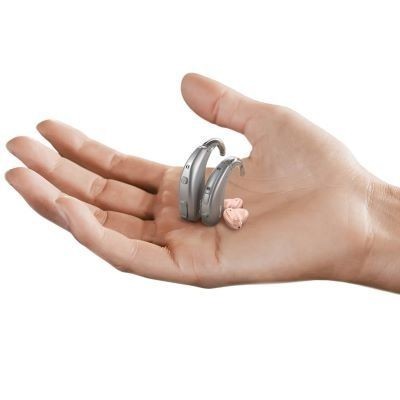
Widex Moment XP ITE hearing aids
- Multiple Bluetooth connectivities with WidexLink technology and the ToneLink app
- Compatible with DEX
- 312 battery
- Telecoil
- Suitable for mild to severe hearing loss
Widex Moment ITE hearing aids
- Multiple Bluetooth connectivities with WidexLink technology and the ToneLink app
- Compatible with DEX
- 312 battery
- Push-button
- Suitable for mild to severe hearing loss
Widex Moment CIC hearing aids and Widex Moment CIC-M hearing aids (mini version)
- Multiple wireless connectivities via WidexLink technology and TONELINK App
- Compatible with DEX
- 10 battery
- Suitable for mild to severe hearing loss
How can my audiologist help me with my Widex Moment hearing aids?
Because we have a nationwide network of over 200 professional audiologists, we can put you in touch with your local audiologist who can:
- Show you all about cleaning Widex Moment hearing aids.
- Show you how to connect Widex moment hearing aids to iPhone
- Tell you all about the Widex Moment hearing aid warranty.
- How to turn off and restart Widex Moment hearing aids if needed.
- Sort out any problems with Widex Moment hearing aids.
Watch our Widex Moment hearing aid unboxing video below
Need more support with Widex Moment hearing aids?
For more information or support with pairing your hearing aids contact your audiologist or visit Widex's support page on their website.
If you would like to know more about upgrading your hearing aids or you have more questions regarding Widex Moment hearing aids and whether they are right for your hearing loss - call us free on 0808 253 5104 and one of our experts can advise you.
Widex Moment Hearing Aids Prices and Cost
Compare the Widex Moment hearing aid technology levels
Widex Moment Hearing Aids Range
Click on the buttons below to discover more
Widex Moment Hearing Aids
How to pair your Widex Moment hearing aids to your smartphone
A generic guide for both iPhone and Android connection
- Turn on your Bluetooth and go to settings.
- On iPhone: Settings > Accessibility > Hearing Devices and on Android: Click on the Bluetooth menu.
- If you can't see your hearing aids name - you'll have to turn them off and turn them back on.
- Select your hearing aids and pair each hearing aid.

Widex Moment Hearing Aids Reviews
What did our audiologists think of the Widex Moment hearing aid range?
Widex Moment Review Summary
Are Widex Moment hearing aids any good? We asked our audiologists for patient feedback and reviews of Widex Moment hearing aids - here is what we received:
- Great improvement on overall sound in comparison to Evoke - in such a small and light device.
- Impressive music playback.
- Great natural sound as well as own-voice improvements.
- Fantastic spatial awareness.
- Discreet and comfortable to wear.
Widex Moment Review - In-depth
The Sound: Patients liked the music playback, by this we mean a rich sound experience that's fully immersive - very similar to the earbud industry. Due to this most people felt like they didn't need to tap into the SoundSense Learn feature to personalise their listening.
This means we can't review this particular feature at this time. However, when using Widex's PureSound, patients found a greater scope of natural sound - especially their own voice.
Spatial Awareness: Because the Moment delivers such great natural sound and music playback - the spatial awareness is increased. Patients were able to keep environmental awareness whilst being active, holding a conversation and listen to music with ease.
Comfort & Fit: The feedback about the style, comfort and fit of the Widex Moment hearing aids is that they are discreet and comfortable to wear. To put device size into perspective - the Moment is similar to Livio Edge but much smaller than the Phonak Paradise.
Streaming: We didn't get much feedback in regards to streaming quality, as patients found they needed an extra boost and used the COM-DEX quite a lot - so it wouldn't be a fair judgment. Our audiologists feel that the Moment app is an integral part of the wearer's hearing experience and essential for remote adjustments, so the streaming might be rather limited without the accessory.
Perhaps, if you are thinking about purchasing the Widex Moment - the COM-DEX accessory is worth considering. Other reasons to invest in this accessory would be if you have an older iPhone mobile or if you want truly hands-free calls.
Paul Harrison is an audiology expert at Hearing Aid UK, with over 20 years of audiology experience and a member of the British Society of Hearing Aid Audiologists Council (BSHAA) between 2015 - 2020.
What's included in our hearing aid prices?
Other pages you might find useful
Our specialist service includes:
Do not spend hundreds of pounds without getting a second opinion from us.
Please call us on 0800 567 7621
 Not only are the prices great, but the service is fantastic! Many thanks to your team.
Not only are the prices great, but the service is fantastic! Many thanks to your team.Widex Moment Hearing Aid Range
Common FAQs about Widex Moment hearing aids
In general, any audiologist will always recommend to you the hearing aid model that best suits your needs. Here is a useful checklist to make sure that is the case.
- Audiologist's level of knowledge: The audiologist you have seen will hopefully have a wide knowledge of all available hearing aids; however, some will only be familiar with a small number of brands and, therefore, may not really be in a position to know which model is the best for you. It is OK to challenge their recommendation and ask them to justify why this particular brand is the one for you.
- Do research: Read about the hearing aid that was recommended. Does it seem like it will suit your lifestyle? Does it have more or fewer features than you need?
- Be aware of sales targets: Many high street retailers have specific tie-ins to a particular manufacturer/brand. The hearing aid they have suggested may still be the correct one for you, but do your research so that you know why they might have recommended it.
If you have significant hearing loss in both ears, you should be wearing two hearing aids. Here are the audiological reasons why:
Localisation: The brain decodes information from both ears and compares and contrasts them. By analysing the minuscule time delays as well as the difference in the loudness of each sound reaching the ears, the person is able to accurately locate a sound source.
Simply put, if you have better hearing on one side than the other, you can't accurately tell what direction sounds are coming from.
Less amplification is required: A phenomenon known as “binaural summation” means that the hearing aids can be set at a lower and more natural volume setting than if you wore only one hearing aid.
Head shadow effect: High frequencies, the part of your hearing that gives clarity and meaning to speech sounds, cannot bend around your head. Only low frequencies can. Therefore, if someone is talking on your unaided side, you are likely to hear that they are speaking, but be unable to tell what they have said.
Noise reduction: The brain has its own built-in noise reduction, which is only really effective when it is receiving information from both ears. If only one ear is aided, even with the best hearing aid in the world, it will be difficult for you to hear in background noise as your brain is trying to retain all of the sounds (including background noise) rather than filtering them out.
Sound quality: We are designed to hear in stereo. Only hearing from one side sounds a lot less natural to us.
Fancy some further reading on this topic? You can read about why two hearing aids are better than one in our article, hearing aids for Both Ears, here
For most people, the main benefit of a rechargeable hearing aid is simple convenience. We are used to plugging in our phones and other devices overnight for them to charge up. Here are some other pros and cons:
For anybody with poor dexterity or issues with their fingers, having a rechargeable aid makes a huge difference, as normal hearing aid batteries are quite small and some people find them fiddly to change.
One downside is that if you forget to charge your hearing aid, then it is a problem that can't be instantly fixed. For most, a 30-minute charge will get you at least two or three hours of hearing, but if you are the type of person who is likely to forget to plug them in regularly, then you're probably better off with standard batteries.
Rechargeable aids are also a little bit bigger and are only available in Behind-the-Ear models.
Finally, just like with a mobile phone, the amount of charge you get on day one is not going to be the same as you get a few years down the line. Be sure to ask what the policy is with the manufacturer's warranty when it comes to replacing the battery.
For most people, the answer is yes. But it's never that simple.
The majority of hearing problems affect the high frequencies a lot more than the low ones. Therefore, open fitting hearing aids sound a lot more natural and ones that block your ears up can make your own voice sound like you are talking with your head in a bucket. Therefore, in-ear aids tend to be less natural.
However, the true answer is we can't tell until we have had a look in your ears to assess the size of your ear canal, and until we have tested your hearing to see which frequencies are being affected.
People with wider ear canals tend to have more flexibility, also there are open fitting modular CIC hearing aids now that do not block your ears.
There is also the age-old rule to consider, that a hearing aid will not help you if it's sat in the drawer gathering dust. If the only hearing aid you would be happy wearing is one that people can't see, then that's what you should get.
Most people can adapt to any type of hearing aid, as long as they know what to expect. Have an honest conversation with your audiologist as to what your needs are.
Generally speaking, six or more. Unless it's none at all. The number of channels a hearing aid has is often a simplistic way an audiologist will use to explain why one hearing aid is better than another, but channels are complex, and it is really not that straightforward. Here are some reasons why:
Hearing aids amplify sounds of different frequencies by different amounts. Most people have lost more high frequencies than low, and therefore need more amplification in the high frequencies. The range of sounds you hear is split into frequency bands or channels, and the hearing aids are set to provide the right amount of hearing at each frequency level.
Less than six channels, and this cannot be done with much accuracy, so six is the magic number. However, a six-channel aid is typically very basic with few other features and is suitable only for hearing a single speaker in a quiet room. The number of channels is not what you should be looking at; it's more the rest of the technology that comes with them.
As a final note, different manufacturers have different approaches. One method is not necessarily better than any other. For example, some manufacturers have as many as 64 channels in their top aids. Most tend to have between 17 and 20. One manufacturer has no channels at all.
Manufacturer's warranties typically last between 2-5 years, depending on the brand and model, and cover defects in materials and workmanship. This includes repairs for component failures, electronic malfunctions, and manufacturing defects, but excludes damage from misuse, accidents, or normal wear. Most manufacturers also include loss and damage insurance for the first year.
We handle all warranty claims on your behalf, liaising with manufacturers and ensuring you get replacement devices quickly when needed. This comprehensive warranty coverage, combined with our lifetime aftercare, gives you complete peace of mind.
Our hearing tests are completely free, whether at our clinics or in your home. Unlike other providers who charge £30-£100 for home visits, we believe hearing healthcare should be accessible without financial barriers. Our comprehensive assessments include examination by a registered audiologist, audiogram results, and personalised recommendations.
All testing, future adjustments, and ongoing support are included at no extra cost. While NHS tests are also free, typical 6-week waiting periods often lead people to seek immediate private testing. We provide prompt, professional assessments that fit your schedule and budget.
Yes, we offer completely free home visits throughout the UK, and this service is included in our prices with no additional charges. Home visits are particularly valuable for people with mobility issues, busy schedules, or those who simply prefer the comfort and convenience of their own environment.
Our audiologists can conduct full hearing tests, fit hearing aids, and provide ongoing support in your home. This service sets us apart from many providers who either don't offer home visits or charge extra for them.
We can offer prices up to 40% lower than high street retailers because of our business model. As a network of 200+ independent audiologists, we don't have the massive overheads of large retail chains - no expensive high street premises, no sales targets pushing audiologists to sell the most expensive options, and no costly marketing campaigns.
However, we maintain the same buying power as the big chains because we purchase on behalf of our entire nationwide network. This means you get access to the same premium hearing aids with professional service, but at genuinely competitive prices.
We offer a comprehensive 60-day money-back guarantee, which gives you twice the industry standard time to properly assess whether your hearing aids are right for you. This extended period recognises that adjusting to hearing aids takes time, and your brain needs several weeks to adapt to the amplified sounds.
Unlike many providers who offer just 30 days, we believe 60 days gives you the confidence to test your hearing aids in all the situations that matter to you - from quiet conversations at home to busy restaurants and outdoor activities.
Ask the Experts
6 Morton Lane
Walkwood
Redditch
Worcestershire
B97 5QA
Latest Launch
When we refer to a product as 'Latest Launch', we mean it is the latest to be released on the market.
New
When we refer to a product as 'New', we mean that the product is the newest hearing aid model on the market.
When we refer to a product as 'Superseded', we mean that there is a newer range available which replaces and improves on this product.
Older Model
When we refer to a product as an 'Older Model', we mean that it is has been superseded by at least two more recent hearing aid ranges.


